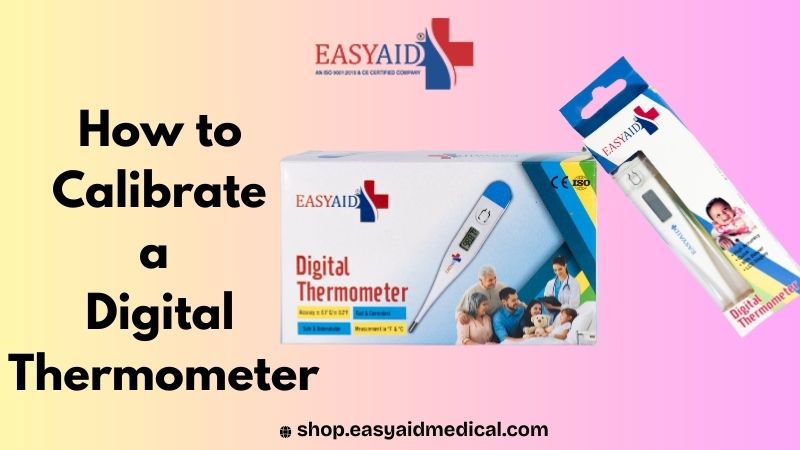Calibration of a digital thermometer is simple but crucial to ensure accurate readings. A calibrated thermometer is essential for anyone who cooks at home, as a hobby, or for work involving sensitive equipment. Digital thermometers lack a screw for manual calibration, but older analog thermometers can occasionally be adjusted with a small wrench. Rather, calibration is the process of verifying its accuracy by comparing it to a known stable temperature. You will know how much to adjust your readings if your thermometer is consistently inaccurate. This is crucial for tasks like cooking or ensuring that a surgical tool is cleaned at the proper temperature.
The Ice Bath Technique
The most popular and reliable method for setting a digital thermometer’s temperature at home is the ice bath method. The concept is straightforward: ice melts at a constant temperature of $0^{\circ}$C ($32^{\circ}$F) at normal atmospheric pressure. Your thermometer’s accuracy will be indicated by this constant.
Gather all of your necessities.
Before you start, you will need a few basic items: To set the temperature, a digital thermometer is required.
A tall glass or thermos can be used as an insulated container or large glass. Making a deep ice bath that maintains its temperature is the aim.
Breaking the ice is crucial. The mixture is thicker and more uniform when crushed ice is used in place of cubes, which aids in maintaining a constant temperature for the water.
Tap water can be used, but it will help the mixture stay stable more quickly if the water is already cold.
Get the ice bath ready.
Pour crushed ice into your container. You need a lot more ice than water for a good ice bath. Fill the container approximately three-quarters of the way to the top with ice. Then gradually pour cold water into the remaining area. It should be a slushy, thick mixture. To ensure that the water is chilled evenly, stir the mixture for approximately 30 seconds using a spoon or the thermometer probe.
Allow the temperature to stabilize
Many people overlook this crucial step. Take your time reading. Let the ice bath settle for three to five minutes. During this period, the ice and water will achieve thermal equilibrium, maintaining the mixture’s overall temperature at 0°C. The calibration reading may not be accurate if you rush through this step.
Go through the book.
Make sure your digital thermometer’s probe is in the center of the ice bath. Verify that the probe is floating in the slushy mixture and completely submerged. The bottom and sides of the container shouldn’t be touched by the probe. The most precise aspect of the ice bath is the core temperature. When you hold the probe in the middle, it measures this. Until the temperature reading stops fluctuating, don’t move the thermometer. It might take ten to thirty seconds.
Examine the outcomes
Check the temperature after the reading has stabilized. A perfectly set thermometer will read precisely 32°F or 0°C. The majority of thermometers have an error margin of one degree Celsius or two degrees Fahrenheit. This slight variation is typically within the manufacturer’s permitted range.
You’ll be able to tell how inaccurate your thermometer is. Your readings are consistently one degree too high if your thermometer consistently reads $1^{\circ}$C. After that, you can mentally adjust your readings by subtracting one degree from all subsequent measurements. You may need to purchase a new thermometer if it is off by more than a few degrees.
Water that is boiling
Boiling water is another method of calibration, though it is less popular for domestic use. Water boils at precisely 100°C (212°F) at sea level. Although the boiling point varies with height, this test can be helpful. The boiling point decreases with elevation. For instance, the boiling point is closer to 95° C in Denver, Colorado.
First, bring the water to a boil.
Pour water into a pot and heat it until it boils.
Step 2: Acquire the Text
The thermometer probe should be carefully inserted into the boiling water without touching the pot’s sides or bottom. Give the reading time to settle.
Step 3: Examine the Outcomes
At sea level, the temperature should be 100 degrees Celsius (212 degrees Fahrenheit). You can tell if it’s off.
The Significance of Calibration
A digital thermometer is a very accurate tool, not just a nice-to-have. You can use a precise temperature reading to determine whether a dish is safe to eat or not, or whether a steak is cooked through or still raw. Accuracy is more than just a nice-to-have in some circumstances, such as making beer at home or using a surgical instrument that must be sterile at specific temperatures. You must do it. Your thermometer will always provide you with accurate readings if you calibrate it every few months or after it falls hard. It gives you confidence in your work and keeps you from making costly or even harmful mistakes.

